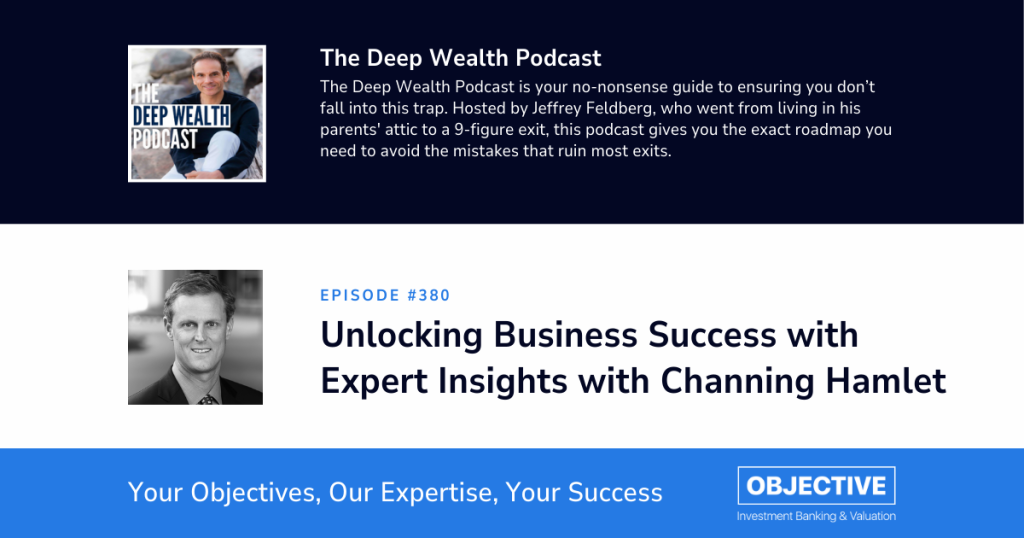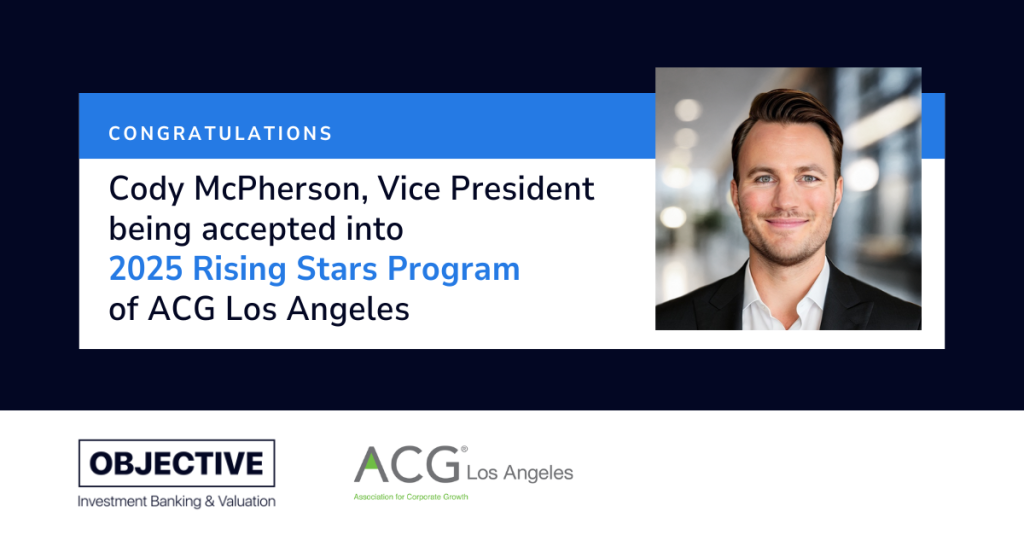As we navigate through 2024, the Software as a Service (SaaS) industry continues to stand at the forefront of technological innovation and business model evolution. This sector, characterized by its subscription-based revenue model, scalability, and digital delivery, has not only reshaped how businesses operate but also how they are valued. Furthermore, with the emergence of AI and its rapid growth in consumer consciousness, 2024 is set to be a year of high opportunity for SaaS companies.
We’ll discuss all of these opportunities in more detail below, but ultimately, the importance of accurate business valuation for SaaS companies cannot be overstated. For stakeholders, from founders and investors to acquirers and incumbents, understanding the value of a SaaS company is crucial for strategic decision-making.
Whether it’s securing funding, evaluating acquisition targets, or planning an exit strategy, the stakes are high. The unique aspects of SaaS businesses, such as recurring revenue streams, high gross margins, and the critical role of customer acquisition and retention, necessitate a nuanced approach to valuation.
In the following sections, we will unpack the valuation methods and core considerations in detail, providing a comprehensive framework for assessing the value of SaaS companies in today’s dynamic market environment.
Key Valuation Metrics for SaaS Companies
In the valuation of SaaS companies, certain metrics stand out for their ability to provide a clear picture of financial health, growth potential, and operational efficiency. These key metrics are essential for investors, analysts, and company leaders to understand and evaluate.
Monthly Recurring Revenue (MRR) and Annual Recurring Revenue (ARR)
MRR and ARR are foundational to the SaaS business model, offering a snapshot of predictable revenue generated from subscriptions. MRR is the total monthly revenue from all active subscriptions, while ARR is essentially MRR multiplied by 12. These metrics are crucial for valuing a SaaS company as they provide a clear, immediate insight into the company’s scale and revenue stability.
Growth Rate in MRR/ARR
High growth rates are often seen as a proxy for future profitability and scalability, making them highly attractive to investors. Valuation models heavily weigh the growth trajectory, as faster-growing companies are typically valued higher than their slower-growing counterparts, all else being equal. This metric is particularly scrutinized in the SaaS sector, where rapid expansion is both possible and expected due to the scalability of digital products.
Customer Lifetime Value (CLTV) to Customer Acquisition Cost (CAC) Ratio
The CLTV to CAC ratio measures the relationship between the lifetime value of a customer and the cost to acquire a customer. A higher ratio indicates that a company is generating significant value from its customers relative to the cost of acquiring them. Ideally, a SaaS company should aim for a CLTV to CAC ratio of 3:1 or higher, signifying that the lifetime value of a customer is three times the cost of acquiring them.
Churn Rate and Its Impact on Valuation
Churn rate, the percentage of customers who cancel their subscription within a given period, directly impacts the revenue and profitability of a SaaS company. A high churn rate can quickly erode MRR/ARR and indicate dissatisfaction among the customer base. Lower churn rates, conversely, suggest strong customer retention and a reliable revenue stream, both of which are positive indicators for valuation.
Profitability Metrics: EBITDA, Cash Flow
While growth metrics are crucial in the SaaS industry, profitability metrics like EBITDA (Earnings Before Interest, Taxes, Depreciation, and Amortization) and cash flow provide insight into the company’s operational efficiency and financial health. EBITDA offers a view of the company’s profitability from its core operations, excluding the effects of financing and accounting decisions. Positive cash flow indicates that a company is generating more cash than it is spending, a sign of financial stability and operational efficiency.
Valuation Methods for SaaS Companies
Here, we explore several key valuation methods tailored to the SaaS industry, each offering different insights into a company’s value.
Income Approach: Discounted Cash Flow (DCF) Analysis
The DCF analysis is a fundamental valuation method that estimates a company’s value based on its expected future cash flows, which are then discounted back to their present value. For SaaS companies, this analysis is particularly nuanced, given the importance of recurring revenue streams, high gross margins, and the scalability of operations.
To tailor the DCF analysis for SaaS specifics, it’s crucial to accurately forecast future cash flows by considering factors such as MRR/ARR growth, churn rate, and the cost structure unique to SaaS businesses. The discount rate should reflect the risk profile of the SaaS industry, which may include considerations for market competition, technological obsolescence, and customer concentration risks.
Market Approach: Comparable Company Analysis (CCA)
CCA involves valuing a company based on the valuation multiples of similar companies within the same industry. For SaaS companies, selecting comparables requires a careful analysis of business models, growth rates, profitability metrics, and market segments. Key valuation multiples include Price to Earnings (P/E), Enterprise Value to Revenue (EV/Revenue), and Enterprise Value to EBITDA (EV/EBITDA), with a particular focus on metrics that reflect the recurring revenue model of SaaS businesses.
Precedent Transactions
This method values a company based on the transaction prices of similar companies that have been acquired or merged in the recent past. Analyzing recent SaaS M&A transactions provides benchmarks for valuation multiples and offers insights into market trends, strategic premiums paid for certain competitive advantages, and the impact of synergies.
Rule of 40
The Rule of 40 is a phrase used in the SaaS industry to assess the balance between growth and profitability. It suggests that a company’s growth rate plus its profit margin should equal or exceed 40%. This rule helps investors and analysts quickly gauge a SaaS company’s performance, with the understanding that high growth rates can often compensate for lower profitability and vice versa. Companies that meet or exceed the Rule of 40 are generally considered to be performing well.
What is the Future of SaaS Valuation?
As we look beyond 2024, several key factors are poised to influence the SaaS valuation landscape, offering both challenges and opportunities for investors, founders, and financial analysts.
1. Increased Market Segmentation and Specialization: The SaaS industry is likely to see further segmentation as companies seek to differentiate themselves in a crowded market. This specialization can lead to higher valuations for firms that dominate niche segments with strong barriers to entry and tailored solutions that address specific industry needs.
2. Subscription Model Evolution: While the subscription model remains central to SaaS, innovative pricing strategies and value propositions are emerging. Models that offer greater flexibility, such as usage-based pricing or hybrid models combining subscription with pay-as-you-go elements, could affect valuations by attracting a broader customer base and enhancing revenue predictability.
3. Regulatory and Compliance Impact: As digital privacy and data protection regulations become more stringent globally, SaaS companies that proactively address these concerns not only mitigate risks but also enhance their valuation by demonstrating commitment to compliance and customer trust.
4. The integration of artificial intelligence (AI) and automation into SaaS offerings is transforming the value proposition of these services. These technologies enable SaaS companies to offer predictive analytics, personalized customer experiences, and more efficient operations, setting them apart from competitors.
5. Expansion into New Markets: There’s a growing trend of SaaS companies expanding their reach into new geographical and vertical markets. This expansion is facilitated by the global nature of the internet and the scalability of SaaS models, allowing companies to tap into untapped demand.
6. Resilience to Economic Fluctuations: The subscription-based model of SaaS companies provides a steady revenue stream, making them more resilient to economic downturns compared to traditional business models. This stability is attractive to investors, especially in uncertain economic times.
Overall, the opportunities for SaaS companies to build and grow in 2024 present the opportunity for the type of market performance we saw in the years prior to 2023. Despite slowed growth last year, the emergence of AI has presented a global opportunity for SaaS companies to innovate and offer value like never before.
What are some examples of SaaS mergers and acquisitions?
In the dynamic landscape of SaaS company transactions, Objective has distinguished itself through a combination of strategic foresight, deep industry knowledge, and a tailored approach to each sale. Two notable case studies exemplify our firm’s expertise in navigating complex SaaS deals:
ProEst Inc: A leader in construction estimating software, ProEst Inc. represented a unique opportunity in a niche market ripe for strategic acquisition. Objective’s role was pivotal in identifying the intrinsic value of ProEst’s innovative solutions and robust customer base. By conducting a thorough valuation that accounted for the company’s recurring revenue, growth potential, and the strategic value of its proprietary technology, Objective was able to articulate a compelling narrative to potential buyers.
Grasp Technologies: Specializing in data management and integration for the travel industry, Grasp Technologies presented a different set of challenges and opportunities having previously been through an unsuccessful sale process years earlier. Emphasizing Grasp’s advanced analytics, customer service excellence, and strategic partnerships, Objective crafted a sale strategy that attracted buyers keen on Grasp’s technological edge and market position. The premium valuation achieved in the sale of Grasp Technologies not only reflected its innovative solutions and expansion potential but also highlighted Objective’s strategic acumen in finding the right buyer who recognized Grasp’s unique value.
Contact Objective for SaaS Valuations
In the rapidly evolving SaaS landscape, accurate valuation and strategic guidance are paramount for businesses looking to navigate their growth, investment, or sale processes effectively.
ObjectiveIBV brings a unique blend of deep industry specialization and strategic foresight. Our focused approach on the SaaS sector enables us to deliver precise valuations and strategic guidance, identifying opportunities and challenges that generalist advisors might overlook. We offer insights into market trends, competitive dynamics and growth strategies that are crucial for navigating your business towards successful investments, sustainable growth or a premium purchase price sale.
Working with Objective means enhancing your advisory team with a partner who provides unparalleled SaaS industry insights and strategic value beyond the valuation.
If you’re seeking to unlock the full potential of your SaaS business, we invite you to contact us for a personalized consultation. Let’s achieve your business objectives together.
Disclosures
This article is for informational purposes only and does not constitute an offer, invitation or recommendation to buy, sell, subscribe for or issue any securities. While the information provided herein is believed to be accurate and reliable, Objective Capital Partners and BA Securities, LLC make no representations or warranties, expressed or implied, as to the accuracy or completeness of such information. All information contained herein is preliminary, limited and subject to completion, correction or amendment. It should not be construed as investment, legal, or tax advice and may not be reproduced or distributed to any person. Securities and investment banking services are offered through BA Securities, LLC Member FINRA, SIPC. Principals of Objective Capital are Registered Representatives of BA Securities. Objective Capital Partners and BA Securities are separate and unaffiliated entities.








